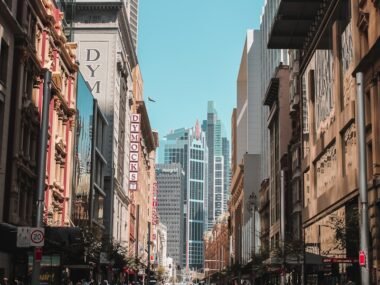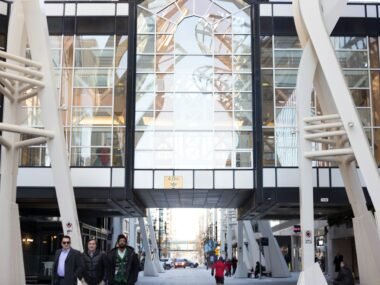Securing a work visa in the US through a job offer opens doors to countless professional opportunities, but the process involves several important steps.
At its core, applying for a work visa through a job offer means having an employer willing to sponsor you, which provides the foundational support needed to meet US immigration requirements.
From choosing the right visa type to ensuring all paperwork aligns with the US Citizenship and Immigration Services (USCIS) guidelines, the process requires precision and collaboration between you and your prospective employer.
This pathway can involve different visa types, such as the H-1B for specialty occupations or the L-1 for intra-company transfers, each with unique criteria and processes.
The application typically begins with your employer submitting a petition on your behalf, followed by your own application steps, including completing forms, preparing for an interview and gathering relevant documentation.
By following a structured approach and staying informed, applicants can navigate this pathway successfully, making their US work ambitions a reality.
Types of Work Visas in the US
There are several categories of work visas that cater to different professions, industries and employment durations.
Securing a work visa in the US through a job offer often depends on matching your role to the appropriate visa category.
Below, we explore the common types to help you and your employer select the right one.
H-1B Visa: For Specialty Occupations
The H-1B visa is perhaps the most sought-after visa for skilled foreign workers. If your job requires specialized knowledge and a bachelor’s degree or higher, the H-1B may be your best route. Professions like IT, engineering, finance and healthcare are typical H-1B candidates.
The H-1B has an annual cap, meaning there are only a certain number of visas available each year. Given the demand, it’s vital to apply early with the support of your employer.
L-1 Visa: Intra-Company Transfers
If you’re already employed by a multinational company with offices in the US, an L-1 visa could be suitable.
This visa allows companies to transfer employees from their foreign branches to the US. There are two types: the L-1A for managers and executives and the L-1B for employees with specialized knowledge.
This visa does not have an annual cap, but it does require that you have worked for the company for at least one year outside the US.
O-1 Visa: For Individuals with Extraordinary Ability
For those who have achieved significant acclaim in their field, the O-1 visa is designed for individuals with extraordinary abilities in the arts, sciences, business, education or athletics.
With a strong job offer from a US company and a track record of outstanding achievements, you may qualify for this prestigious visa.
H-2B Visa: For Temporary Non-Agricultural Workers
The H-2B visa is aimed at foreign nationals seeking seasonal, peak-load or temporary employment in non-agricultural sectors.
This visa is typically used by industries like hospitality, construction and tourism. Like the H-1B, there is an annual cap on the H-2B, so timing and employer sponsorship are crucial.
TN Visa: For Canadian and Mexican Professionals
Under the US-Mexico-Canada Agreement (USMCA), professionals from Canada and Mexico may qualify for a TN visa if they have a job offer in a qualifying occupation.
This visa is simpler to obtain compared to others and it doesn’t have an annual cap, making it an attractive option for eligible North American workers.
Steps to Apply for a Work Visa in the US Through a Job Offer
Now that you know which visa category might be best for your situation, let’s dive into the application process. Here’s how to apply for a work visa in the US through a job offer, step-by-step.
Step 1: Ensure Your Job Offer Meets Visa Requirements
Each work visa has specific requirements. Confirm that your job offer aligns with the visa’s criteria.
For example, if you’re applying for an H-1B visa, your role should qualify as a specialty occupation. If it’s an L-1 visa, make sure you meet the minimum work tenure with your current employer.
Discuss these points with your employer to ensure the job offer is compatible with your visa needs.
Step 2: Employer Files the Petition with USCIS
In most cases, your US employer must initiate the process by filing a petition with the US Citizenship and Immigration Services (USCIS). This step is essential because it establishes your eligibility for a specific visa category.
- For H-1B Visa: The employer files Form I-129, Petition for a Nonimmigrant Worker. They may also need to provide a Labor Condition Application (LCA) to confirm that the role meets wage and working condition standards.
- For L-1 Visa: The employer also files Form I-129, but no LCA is required.
- For H-2B Visa: The employer must get a Temporary Labor Certification from the Department of Labor before filing Form I-129.
The processing times vary depending on the visa type and USCIS workload. Premium processing is available for certain visas, which can expedite the process significantly.
Step 3: Receive the Form I-797 Approval Notice
Once USCIS approves your employer’s petition, you will receive Form I-797, the Notice of Action.
This form confirms that you are now eligible to proceed with the visa application. It’s a crucial document, so make sure to keep it safe and have it available for the next steps.
Step 4: Complete the DS-160 Online Application
The DS-160 is the online nonimmigrant visa application form required for almost all US visa applicants. Completing the DS-160 is straightforward, but it requires accuracy and attention to detail.
- Go to the Consular Electronic Application Center (CEAC) website.
- Fill out your details as prompted, including personal information, work history and details of your job offer.
- Pay the DS-160 application fee, which varies by country.
Step 5: Schedule the Visa Interview at the US Embassy
Once you complete the DS-160, you’ll need to schedule an appointment at a US embassy or consulate in your home country.
The waiting time for an interview varies widely by location, so it’s wise to book as early as possible.
At the interview, you’ll need to bring several documents, including:
- Your passport (valid for at least six months beyond your intended stay)
- Form I-797
- DS-160 confirmation page
- Appointment confirmation letter
- Job offer letter from your US employer
- Any additional documents related to your specific visa type (such as evidence of extraordinary ability for O-1 applicants)
Step 6: Attend the Visa Interview
During your visa interview, the consular officer will ask questions about your job offer, employer, qualifications and intent to return to your home country after the visa expires. Answer honestly and confidently.
They may also ask about your ties to your home country, so be prepared to discuss family, property or other obligations that demonstrate your intent to return.
Tips for Success When Applying for a US Work Visa
Securing a work visa in the US through a job offer requires preparation and diligence. Here are some tips to help you navigate the process smoothly.
Double-Check All Paperwork
Mistakes on forms can lead to delays or even denial of your application. Ensure that all documents, especially the DS-160 and Form I-129, are filled out accurately and include up-to-date information.
Communicate Clearly with Your Employer
Since much of the visa application process relies on your employer, maintain open communication with them.
Confirm that they have the necessary paperwork and are aware of their responsibilities in the visa sponsorship process.
Understand the Limitations of Your Visa
Each work visa has specific rules and limitations. The H-1B, for example, allows for dual intent, meaning you can apply for a green card while on this visa.
The L-1, however, requires intent to return to your home country. Knowing these distinctions can help you make informed career and immigration decisions.
Prepare for the Visa Interview Thoroughly
The visa interview is a critical part of the process. Practice your answers to common questions, ensure all documents are organized and dress professionally.
Arriving at the interview well-prepared can make a positive impression on the consular officer.
What Happens After You Receive Your Work Visa?
Once your visa is approved, you’re almost ready to start your new job in the US. Here’s what to expect next.
Port of Entry Procedures
When you arrive in the US, you’ll need to go through customs and border protection. Have your passport, visa and job offer letter ready for inspection. The officer may ask additional questions about your stay and employment.
Obtaining a Social Security Number (SSN)
To work legally in the US, you’ll need a Social Security Number (SSN). Apply for one at your nearest Social Security Administration (SSA) office as soon as possible. Your employer will need your SSN to process your payroll and withhold taxes.
Adhering to Visa Terms
Each work visa has its own set of conditions, such as work duration, renewal options and potential for permanent residency.
It’s crucial to understand these terms to avoid jeopardizing your immigration status. For example, some visas allow you to bring family members on dependent visas, while others may restrict employment options for your spouse.
Renewing or Extending Your Work Visa
Many work visas offer renewal or extension options, allowing you to stay in the US for an extended period. Here’s how to proceed if you want to extend your stay.
Renewal Process for H-1B and L-1 Visas
Both the H-1B and L-1 visas can be renewed, subject to approval. Your employer must file another petition on your behalf, similar to the initial application process.
For H-1B holders, the visa can be renewed for up to six years. The L-1A allows up to seven years, while the L-1B allows up to five.
Transitioning to a Green Card
Certain work visas, like the H-1B and L-1, allow for a direct path to a green card, which grants permanent residency.
Your employer must file a green card petition on your behalf, but this process can take several years due to high demand and limited quotas.
If you’re interested in permanent residency, discuss this option with your employer as early as possible.
Common Pitfalls and How to Avoid Them
Applying for a work visa in the US through a job offer can be complex and there are several common pitfalls to be aware of.
Incomplete Paperwork
A frequent cause of delays is incomplete paperwork. Ensure that you and your employer provide all required documents in full and double-check for accuracy.
Missed Deadlines
Some visas, like the H-1B, are time-sensitive due to annual quotas. Missing the deadline could mean waiting another year to apply, so stay informed and act promptly.
Failure to Adhere to Visa Conditions
Overstaying your visa or working outside the authorized job role can result in penalties, including deportation. Familiarize yourself with your visa’s terms and stay within them.
Not Planning for Dependents
If you’re bringing family members, make sure they also meet visa requirements. Dependents may need additional paperwork and visa options vary depending on the visa category.
Applying for a work visa in the US through a job offer is an exciting opportunity. While the process is complex, knowing what to expect can ease the journey.
From understanding visa types and gathering necessary documents to preparing for the interview, each step plays a vital role in achieving your dream of working in the United States.
With determination, clear communication with your employer and thorough preparation, you’re well on your way to a successful work visa application.
People also read:






